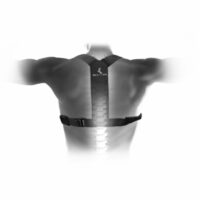Olympic Swimmers and Their Battle with Injuries
Australia boasts an impressive record in Olympic swimming, a sport that has brought home a whopping total of 190 medals, with 59 of those adorned in gold. The effortless grace displayed by these athletes in the water might suggest a simple journey, but beneath the surface lies a tale of injuries and relentless training hours, indispensable for their triumph.
Swimmers must weave together a delicate tapestry of strength, power, endurance, and flexibility to excel. While the bulk of injuries transpire within the confines of the pool during rigorous training and fierce competition, it’s essential to acknowledge that ‘out of water’ incidents, such as ankle twists, can also take a toll on a swimmer’s performance. Not surprisingly, injuries are par for the course in the world of swimmers, with male competitors reporting four injuries per every 1000 hours of training and female swimmers reporting 3.8, as recorded by Wolf et al. in 2009.
So, what exactly are the common injuries plaguing these aquatic champions?
Olympic Swimmer Injuries
The Gold Medal Goes To …
If gold medals were handed out for injuries, the shoulders would stand atop the podium, crowned as the most frequently injured body part among swimmers. Sein, Walton, and Linklater (2010) highlighted that a staggering 91% of swimmers have experienced a shoulder injury.
The notorious ‘swimmer’s shoulder‘ is colloquially known as Rotator Cuff Injury, a spectrum spanning from shoulder impingement , shoulder bursitis, tendinopathy and even rotator cuff tears that sometimes necessitate surgery. While we often associate these injuries with elite swimmers, it’s paramount to acknowledge that swimmers across all levels are susceptible to such setbacks. Swimmer’s shoulder, the preeminent swimming injury, often manifests as shoulder pain during strokes, occasionally accompanied by clicking sensations and clunking sounds, sometimes painful and at other times not.
Now, let’s unveil the surprise Silver Medalist!
Can you guess it?
It’s none other than the ‘Knee‘!
Knee injuries have knocked on the door of a significant 86% of swimmers who’ve encountered at least one bout of knee discomfort, per Rovere et al. (1985). Yet, it’s pertinent to note that such injuries are mostly confined to breaststroker’s knee.
And the Bronze goes to…
Drum roll, please… Spinal injuries, often precipitated by the repetitive motions of swimming. The silver lining here is that these mostly involve muscle strains and joint stiffness. However, seeking early intervention for an accurate diagnosis and tailored management plan is paramount. Back pain has made its presence known to 50% of butterfly swimmers and 47% of breaststroke swimmers at some juncture in their careers, as noted by Drori et al. in 1996.
But wait, there’s more! Other competitors enter the fray in the realm of swimming injuries. Given the buoyant nature of swimming, the gravity of an injury can be overlooked, impacting a swimmer’s performance in ways unimaginable. Lesser-seen injuries encompass:
- Foot and Ankle: Ankle tendinopathy of the extensor tendons.
- Elbow: Stress syndromes and lateral epicondylalgia.
- Wrist and Hand: De Quervain’s tenosynovitis and Thoracic Outlet Syndrome.
So, what brings forth these swimming injuries?
The culprits are often:
- Overtraining
- Poor technique
- Sudden spikes in workload
Numerous factors contribute to injury susceptibility. Expert physiotherapists can pinpoint and rectify these factors, reducing the risk of injuries. At PhysioWorks, our practitioners are adept at addressing swimming injuries, even liaising with coaches for a swift recovery.
Various elements can pave the way for injuries:
- Past injuries
- Joint stiffness
- Muscle tightness
- Scapulohumeral rhythm anomalies
- Weak rotator cuff muscles
- Inadequate joint mobility
- Insufficient recovery time
- Subpar warm-up/cool-down routines
- Core instability
Prevention reigns supreme!
Despite the daunting array of possible injuries, prevention is indeed within reach. Evidence underscores the importance of proactive injury management, focusing on prevention and early intervention, correcting impairments associated with the condition, and analyzing stroke mechanics and training methods (Tovin, 2006).
The first step towards prevention is acknowledging your symptoms and seeking help. Reach out to your coach or physiotherapist for guidance.
The subsequent step involves assessing your body’s compatibility with your chosen event. Swimmers must embody a blend of strength, mobility, power, and endurance, tailored to their specific event, be it the 100m dash or the grueling 1500m marathon.
Did you know?
PhysioWorks has developed a bespoke swimmer screening tool, tailored for swimmers of all ages and levels. This tool helps pinpoint areas for improvement. The comprehensive screening process takes time, so make sure to express your interest when booking.
Got a whole squad to screen? Not a problem! PhysioWorks physiotherapists can visit your squad, assessing everyone and identifying ways to prevent injuries. This process can even enhance performance, as we collaborate with coaches to cater to individual needs.
For those seeking a Swimming Injury Screening, reach out to the friendly team at PhysioWorks, and we’ll arrange a suitable session.
Treatment for Swimming Injuries
While each swimmer’s journey is unique, treatment typically involves manual therapy. The approach hinges on your physiotherapist’s profound grasp of your stroke and discussions with your coach. Identifying the root cause and, if necessary, modifying your stroke technique are the linchpins of success.
Common treatments encompass:
- Stroke refinement
- Diversifying training styles to avoid overemphasis on one technique
- Land-based strength and conditioning
- Core strengthening
- Strengthening the rotator cuff
- Sports massage
- TENS machines
- Ultrasound
- Mobilisation and manipulation
- RICE protocol (Rest, Ice, Compression, Elevation)
- Acupuncture/Dry needling
For any queries regarding these injuries or their prevention, don’t hesitate to consult your PhysioWorks Swimming physiotherapist.







































































